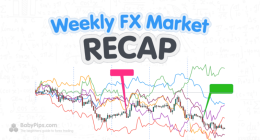
23andMe Holding Co., known for its at-home health and ancestry tests, is spending cash raised in its recent public listing on what could be a yearslong process to develop new drugs.
Sunnyvale, Calif.-based 23andMe went public in June through a merger with VG Acquisition Corp., a special-purpose acquisition company backed by British billionaire Richard Branson. The company, founded in 2006, raised roughly $592 million in gross proceeds through the transaction. It had about $700 million in cash on hand as of Sept. 30.
23andMe plans to deploy the cash from its SPAC deal largely to fund ongoing investments into drug discovery, Chief Financial Officer Steve Schoch said. After years of selling at-home tests, the company created a therapeutics division six years ago, aiming to use its massive database of genetic information to identify new treatments. The database had information from about 11.9 million consumers as of Sept. 30.
By querying its database, 23andMe can find causal links between genetic variations and diseases and use that information to develop new treatments, Mr. Schoch said. Among its findings so far: evidence of genetic variants that bolster the immune system and decrease the risk of cancer.
23andMe currently has two immuno-oncology drugs under development. One of them, created through a partnership with pharmaceutical giant GlaxoSmithKline PLC, is in the clinical trial stage. The second one is expected to enter clinical trials by the end of March, according to Mr. Schoch. The company has used its database to identify more than 40 possible drug targets to treat types of diseases.
The two cancer drugs, if effective, could help 23andMe turn its first-ever profit, according to Mr. Schoch. The company reported a net loss of $16.5 million for the quarter ended Sept. 30, compared with a net loss of $36.2 million in the same period a year earlier. Total revenue in the quarter ended Sept. 30 rose 7% from a year earlier to $55.2 million.
Moving through clinical trials and receiving approval from health regulators could take several years, Mr. Schoch said, noting the SPAC deal provides 23andMe with a cash cushion it can use until it has more clinical data showing the viability of its drugs.
“Once you have meaningful efficacy data on the biotech side of things, the ability to raise capital, and the price at which you raise capital, will change meaningfully and will become less expensive and more available,” Mr. Schoch said.
23andMe currently generates about 81% of its revenue from its at-home genetic tests, which provide consumers with information about their ancestry and screen for chances of developing health conditions that range from eczema to breast cancer. The remainder of its revenue comes from providing GSK with access to research from its database. Consumers must consent to share their genetic information—which is stripped of personal details such as names—with third parties for research purposes, according to 23andMe.
The company’s consumer and research division is close to consistently breaking even on an adjusted earnings before interest, taxes, depreciation and amortization basis, while its therapeutics segment is the major contributor to its loss.
During the quarter ended Sept. 30, the consumer and research services division reported an adjusted Ebitda loss of $760,000. The therapeutic division reported an $18.9 million adjusted Ebitda loss during the same period.
As part of its partnership with GSK, 23andMe pays half of the total development costs, including labor and materials, while it bears the full cost of developing its own drugs.
23andMe’s competitive edge stems from its novel method of collecting and analyzing genomic data, according to Natalie Schibell, a senior analyst at market research firm Forrester Research Inc. That can be a challenge for other companies in the pharmaceutical industry, which typically rely on a range of data sources such as scientific publications and clinical trials, she said.
23andMe this month also moved into the telehealth business by acquiring Lemonaid Health Inc., which will provide an additional revenue stream, for $400 million, with 25% paid in cash and the remainder in stock. 23andMe aims to integrate genetic health information it provides customers with Lemonaid’s primary care and pharmacy services.
23andMe decided to pursue a SPAC transaction rather than a traditional public listing or a private fundraising because it would provide the most capital, which is critical because it can take years for new drugs to reach the market, Mr. Schoch said.
“We only advertise our direct-to-consumer business,” he said. “We’ve been very, very quiet about the biotech business because [with] that one, you just have to wait until it moves.”
Write to Kristin Broughton at [email protected]
Copyright ©2021 Dow Jones & Company, Inc. All Rights Reserved. 87990cbe856818d5eddac44c7b1cdeb8









